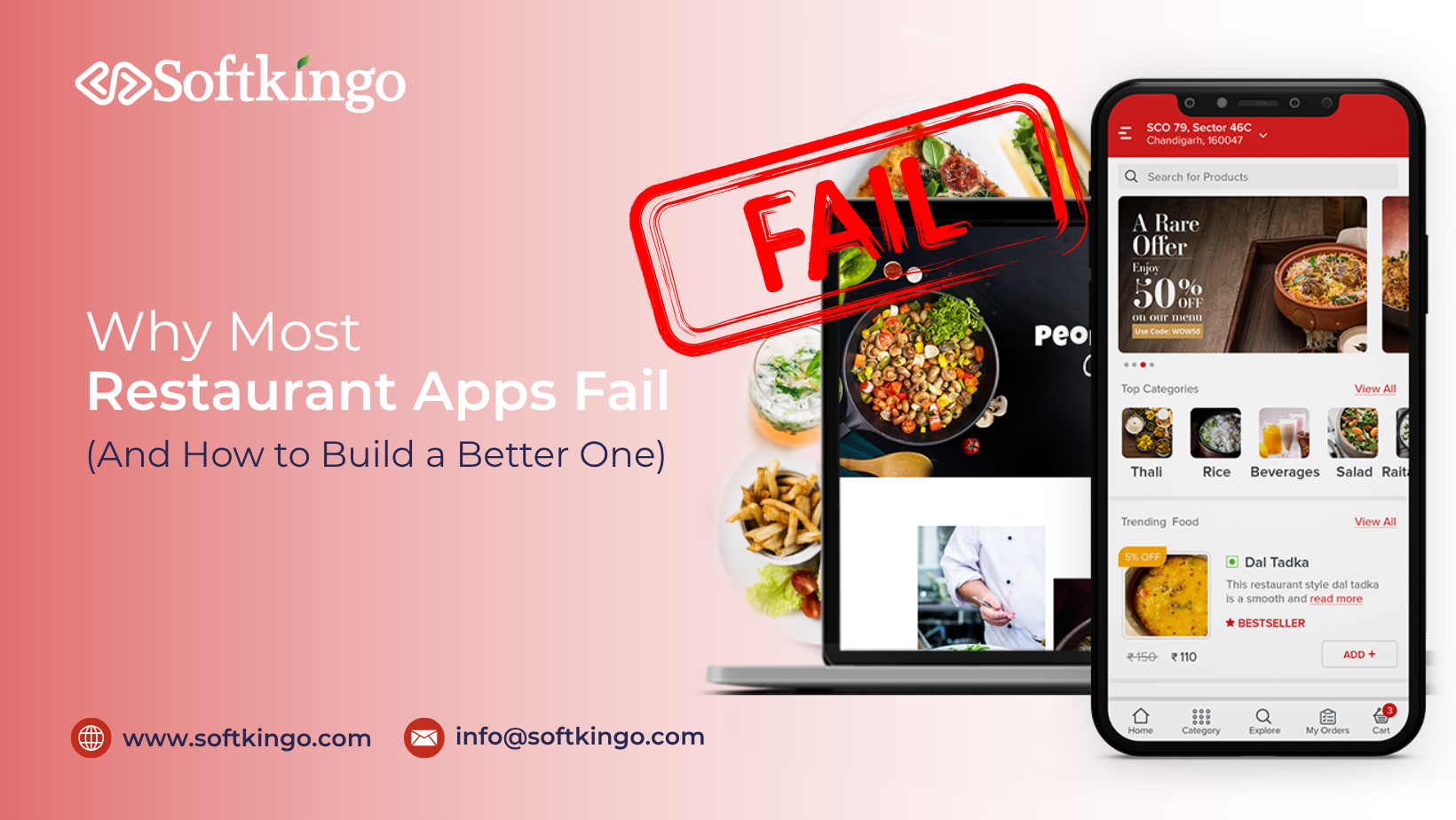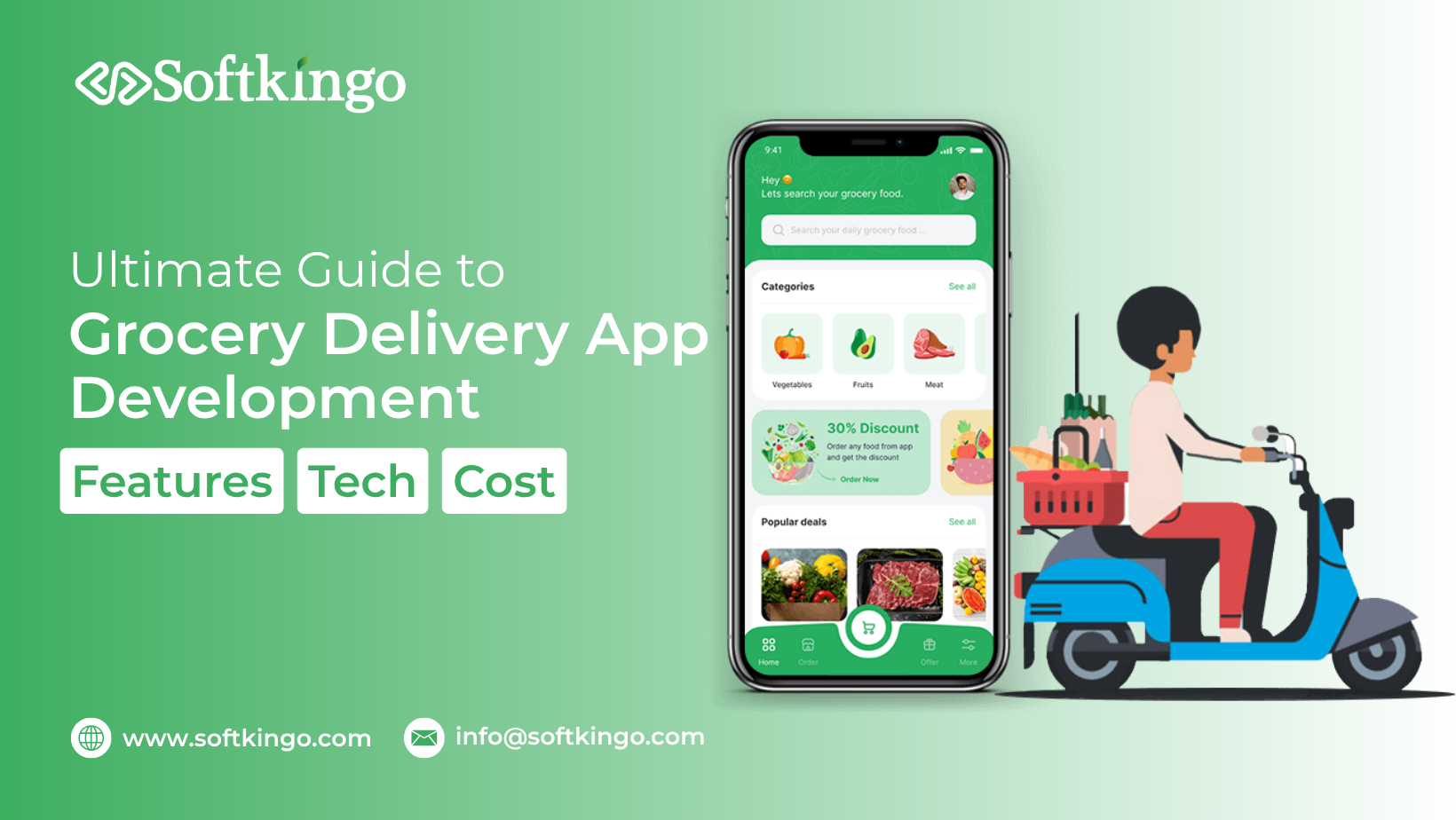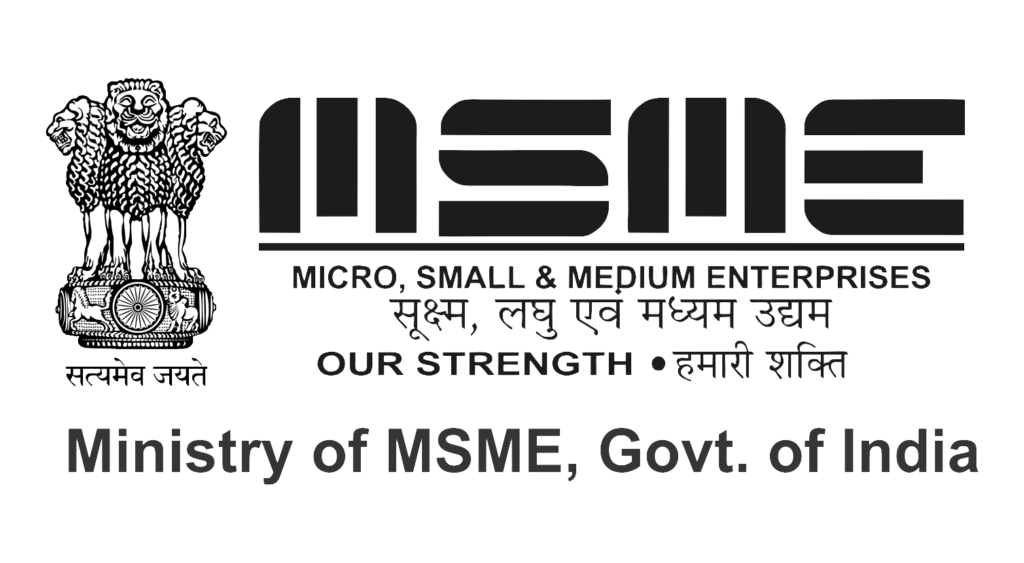Vision Pro App Development: A Guide for Business Leaders and Product Teams
Apple Vision Pro is more than just a new device — it’s a new way of seeing and working in the digital world.
For business leaders, this isn’t about following a trend. It’s about exploring a new space where the physical and digital truly come together — a place where products can be experienced, not just seen, and where collaboration feels more real, even when people are miles apart.
What’s driving interest in Vision Pro? Real business needs. A recent Statista report from early 2024 showed that nearly 30% of business owners are turning to Vision Pro to support better virtual collaboration. Another 22.5% are using it to create more immersive, memorable brand experiences. These numbers tell a clear story: companies are investing in this technology because it solves problems they care about.
That’s why more and more organizations are treating Vision Pro app development as a strategic move — one that can change how they connect with customers, partners, and teams.
From hosting lifelike virtual meetings to building interactive 3D product demos, businesses are starting to explore what’s possible when digital experiences are designed to feel natural in physical space.
Teams developing for Vision Pro aren’t just porting over old ideas. They’re rethinking what’s possible, designing new ways for people to interact with content that feels fluid, intuitive, and fully grounded in their environment.
This guide will help you navigate the process — from understanding what makes a great Vision Pro experience to building apps that meet real business goals, follow Apple’s design principles, and scale with your needs.
What is apple Vision Pro?
The Apple Vision Pro places digital experiences outdoors into the realm of reality. Instead of staring at a screen in your hand or sitting on a desk, apps, videos, and content float in that space of yours—on your couch or across your kitchen table, sometimes even beside you when you move around.
The Apple Vision Pro was announced as the beginning of spatial computing by Apple in June 2023. What does it mean? Spatial computing combines AR and VR to offer a more natural way of experiencing technology: where digital things aren’t confined to a screen but appear to exist in the same room in which you are.
No mouse. No controllers. The user is free to interact with tech using only his or her eyes, hands, or voice. It is the smoothest, most intuitive experience ever—a step into what the future is going to be like.
What is Vision Pro App Development?
Building apps for Vision Pro is not simply about developing for a new screen; it involves providing experiences that people move through and interact with, almost like world-building instead of app-building.
This isn’t about porting mobile or desktop apps to a new format. It’s about creating entirely new types of interactions. When you design for Vision Pro, you’re building immersive 3D experiences that people move through and engage with naturally—no mouse, no controller, no screen required.
And this isn’t just tweaking old apps to work in a headset. You’re building something entirely new—apps that match Apple’s vision for the future, and more importantly, fit your company’s goals in a world where digital and physical are starting to merge.
Top-Line Business Use Cases Driving Vision Pro App Development in 2025
It is not novelty that drives the development of Vision Pro apps. Different sectors are investing in spatial experiences aligning with tangible objectives of shortening time spent on training, enhancing buyer warranty, and enabling collaborative immersion.
Spatial interfaces let your teams place applications directly into the physical environment. Another expression without traditional screens and input devices is provided by spatial app interfaces: Nike can reinvent its customer engagement product, employees get trained, and operations make live decisions.
This evolution follows Apple Vision Pro trends, where enterprise immersive workflows change the ways people interact and make decisions.
Enterprise leaders in Apple Vision Pro app development concentrate on select categories closely aligned with spatial interaction paradigms and enterprise workflows.
Retail & Fashion: Immersive Product Demonstrations & Virtual Showrooms
Apple Vision application development is employed to create Virtual Showrooms for Retail, Automotive, and Real-Estate companies.
Retail, automotive, and real estate companies use Apple Vision app development to create virtual showrooms. These applications allow your customers to explore products inside their own environments. With spatial interaction, you can reduce physical store visits, improve engagement, and shorten the sales cycle.
Healthcare Industry
Healthcare providers, aviation trainers, and manufacturers develop apps for Apple Vision Pro to deliver realistic, risk-free simulations. Vision Pro–based training modules in industries like aviation and healthcare increase retention, and reduce the cost of physical training setups.
Education and Training
VisionOS app development provides a platform for the creation of interactive learning apps that learners can explore. These apps will enhance and make learning more active through the use of complex scientific concepts, 3D models, and historical sites in a 3D learning environment.
Remote Collaboration and Spatial Meetings
Leading teams build collaborative platforms using Apple Vision Pro apps development to replace flat video calls with real-time 3D interaction. Your team can review models, interact with shared content, and stay aligned with greater presence and clarity.
Data Visualization and Real-Time Operations
Logistics firms, utility providers, and industrial operators develop Vision Pro apps that visualize data in spatial dashboards. You gain real-time operational awareness, reduce information overload, and empower faster frontline decision-making.
Virtual Tours and Learning Experiences
Museums, universities, and publishers are developing apps for Vision Pro that support spatial learning. These apps let your users explore complex environments, interact with models, and participate in guided experiences that improve understanding.
Travel and Hospitality
Travel brands and hotel chains are investing in apple vision pro app development to create immersive previews of destinations, resorts, and experiences. Customers can explore rooms, tour local attractions, or walk through packages before booking. These spatial apps increase pre-arrival conversions, reduce cancellations, and elevate guest confidence during planning.
Logistics and Fleet Operations
Logistics companies develop vision pro apps to monitor vehicles, inventory, and warehouse activity through real-time spatial dashboards. Managers can visualize fleet movements, delays, and stock flow mapped directly to 3D environments.
Real-time spatial dashboards built for logistics teams improve operational visibility, speed up routing decisions, and reduce reliance on complex screen-based systems.
Beauty and Cosmetics
Beauty retailers and cosmetics brands use apple vision app development to create personalized virtual try-ons, product tutorials, and interactive consultations. Customers can test looks, receive recommendations, and engage with branded experiences in-store or at home. These spatial applications reduce product returns and drive higher engagement across digital beauty journeys.
Entertainment and Media
Understanding how to make applications for Vision Pro can change the game for that sector. VisionOS can enable the creation of immersive experiences for movies, concerts, or interactive storytelling, thus offering new ways for audiences to enjoy content.
Manufacturing and Engineering
Companies could develop Apple Vision Pro apps to facilitate the complexities of assembly processes, maintenance, and training, where overlaid instructions with all details are superimposed onto the work set for correct and efficient performance.
Every one of these use cases is grounded in real business value. Companies want to know how to develop apps for Apple Vision Pro that support transformation, improve operations, and generate long-term ROI, not just novelty.
What Are the Top Vision Pro Apps Transforming Industries Today?
Apple Vision Pro might be new, but it’s already making a real impact across industries. Businesses aren’t just experimenting with the tech—they’re solving real problems, improving workflows, and engaging customers in ways that weren’t possible before.
Here’s a look at some standout Vision Pro apps that are already changing the game:
1. Zoom — Rethinking Remote Collaboration
Zoom’s Vision Pro app takes virtual meetings to the next level. Instead of the usual grid of faces, you get a spatial meeting room where people appear life-sized and shared content hovers naturally around you. For companies relying on hybrid work, this creates more presence, focus, and connection—without needing to travel.
2. Microsoft 365 — Productivity in a 3D Workspace
Microsoft didn’t waste time bringing Teams, Word, Excel, and PowerPoint to Vision Pro. With these tools, you can work with documents in a hands-free, spatial environment. Think spreadsheets floating beside your task list or project timelines you can walk through. It’s a powerful glimpse into what the future of work could look like.
3. TeamViewer — Remote Support with Real-Time Spatial Guidance
TeamViewer’s app for Vision Pro supports technicians in the field with real-time overlays and expert guidance. Instead of guessing or flipping through manuals, workers can see exactly what they need to do, right in their line of sight. It’s a perfect example of how spatial apps reduce errors and improve service in complex environments.
4. Scope AR — Training That’s Visual, Hands-On, and Fast
Scope AR’s WorkLink app helps companies deliver step-by-step spatial instructions for maintenance, repairs, and training. Aerospace and automotive companies are already using it to speed up onboarding and eliminate old-school printed manuals. It’s practical, scalable, and shows real ROI.
5. KLM Engine Shop — Engineering with Clarity
KLM developed a Vision Pro app to help their engineers explore aircraft engine components in detailed 3D. It helps teams diagnose problems more accurately and run safety checks with more confidence. This kind of immersive visualization is a smart move for any high-precision industry.
6. JigSpace — Product Demos That Speak for Themselves
JigSpace lets companies present their products as interactive 3D models. Whether you’re in sales, onboarding, or support, showing someone exactly how a product works—layer by layer—makes your message clearer and more memorable. Brands like Toyota and Medtronic are already using it, and it’s easy to see why.
7. Mytheresa & J.Crew — Shopping Gets Personal
Luxury brands like Mytheresa and J.Crew are making shopping more immersive with Vision Pro. Customers can view items in 3D, explore textures, and move through collections like they’re in a high-end showroom. It’s retail therapy—reinvented—and it’s driving both engagement and sales.
Why Businesses Are Investing in Vision Pro App Development and Why You Should Too
Apple Vision Pro is not just another tech release—it represents a fundamental shift in how we interact with digital content. Vision Pro app development is enabling businesses to accelerate workflows, enhance training programs, and provide customers with deeper, more immersive experiences. By replacing traditional screens with spatial environments, organizations are unlocking a completely new way to engage users, drive operational efficiency, and stay competitive in a fast-moving digital landscape.
Forward-thinking companies are not embracing spatial computing just for the sake of novelty or innovation theatre. They are investing in Vision Pro app development to gain real business advantages such as faster sales cycles, stronger training outcomes, better customer interactions, and improved collaboration across distributed teams. These organizations are building applications that align with specific business goals—and are already seeing measurable performance gains.
If your organization is considering Apple Vision Pro app development, now is the time to move forward. The early adopters are already experiencing benefits in user engagement, internal productivity, and cost savings. By prioritizing spatial interfaces and immersive environments, you too can future-proof your digital strategy and gain a strategic edge over your competitors.
Why Vision Pro App Development Is Gaining Traction Across Industries
Here are some of the key reasons why business leaders across different industries are investing in Vision Pro app development today:
Sales Teams Are Closing Deals Faster
Sales professionals can use Vision Pro applications to showcase products in realistic 3D environments. These immersive previews allow potential customers to experience how a product will look and function within their own physical spaces. This not only builds trust and boosts customer confidence but also reduces the need for physical demonstrations, making the sales process more efficient and accelerating decision-making timelines.
Training and Onboarding Become More Scalable and Effective
Companies that need to onboard large numbers of employees or train staff across multiple locations are turning to Vision Pro for scalable solutions. Spatial simulations allow employees to participate in hands-on training experiences without needing to travel or attend in-person sessions. These experiences improve learning retention, eliminate the need for printed materials or manuals, and drastically reduce the time it takes for new hires to become productive.
Personalized Product Presentations Increase Engagement
Applications built for Vision Pro can adapt based on user behavior and spatial context. This enables brands to offer highly personalized product demonstrations or service experiences that feel unique to each user. This level of contextual interaction increases brand engagement, improves conversion rates, and helps foster long-term customer relationships.
Cross-Functional Teams Collaborate More Effectively
In today’s hybrid work environment, teams are looking for better ways to collaborate. Vision Pro enables the creation of spatial meeting rooms where team members can interact with 3D content, live whiteboards, or digital prototypes in real-time. These spatial collaboration tools go far beyond video conferencing or screen sharing, providing clarity, alignment, and real-time feedback that accelerates decision-making and drives creativity.
Upskilling Is Faster, More Consistent, and Easier to Measure
Using interactive learning modules that respond to real-time input, organizations can upskill their teams more consistently. Vision Pro apps allow businesses to deliver role-specific training that adapts to user actions and provides instant feedback. This results in improved performance across departments, reduces the knowledge gap between new and experienced employees, and ensures that teams can adapt to change faster.
These are just a few of the reasons Apple Vision Pro is gaining traction across industries like healthcare, education, manufacturing, logistics, and real estate. The ability to visualize real-time data, guide customers through virtual walkthroughs, and provide immediate support within an immersive product environment is helping businesses scale, simplify complex workflows, and improve service delivery.
Two Options for Vision Pro App Development
Organizations looking to develop apps for Apple Vision Pro typically follow one of two strategic paths. Each offers a different balance of speed, cost, and creative freedom:
1. Convert Existing Apps to Work on Vision Pro
This approach involves adapting your existing iOS or iPadOS apps to work in the Vision Pro environment. While the core features of your app remain largely unchanged, the user interface and user interactions are optimized for spatial computing. This includes enabling gesture controls, voice input, and adapting screens to a 3D layout. This method is ideal for companies that already have successful apps and want to extend them into the spatial ecosystem quickly and cost-effectively.
2. Build New Vision Pro Apps from Scratch
Developing an app from the ground up specifically for Vision Pro allows you to fully embrace the platform’s spatial capabilities. This approach is perfect for businesses that want to take full advantage of Vision Pro’s immersive display, spatial audio, real-time gesture recognition, and advanced sensors. Using Apple’s visionOS and tools like RealityKit, developers can create completely new experiences that are not possible on traditional devices. If your goal is to stand out and build something transformative, starting from scratch is the best path forward.
A Step-by-Step Guide to Building Vision Pro Apps for Your Business
If you’re ready to start building for Vision Pro, here’s a complete guide to the development process—from defining your concept to deploying your app on the VisionOS App Store:
Step 1: Define Your Purpose and Business Goals
The foundation of any successful Vision Pro app is a clear purpose. Understand what your business hopes to achieve by entering the spatial computing space. Look at how other apps—like educational tools, immersive simulations, or product configurators—are using Vision Pro’s spatial features to create unique value. Your app should aim to solve a real problem, fill a market gap, or improve user interaction in a way that only Vision Pro can deliver.
Step 2: List Out the Features Your App Will Offer
Based on your defined goals, identify the features your app should include. Think about how these features will operate in a 3D space and how they will enhance user experience. Consider using:
- Gesture-based controls for hands-free navigation
- Spatial audio to create immersive sound environments
- High-resolution visuals to represent 3D models or environments
- Voice input for intuitive commands
- Multi-user collaboration tools for group experiences
Step 3: Hire VisionOS App Development Experts
To ensure your project is successful, you’ll need developers who understand Apple’s visionOS platform, as well as tools like RealityKit, ARKit, and Swift. Look for developers with experience in building 3D environments, working with USDZ file formats, and implementing natural user interactions using eye tracking and gesture detection.
Step 4: Design a Vision Pro-Specific UI/UX
Designing for spatial computing is very different from designing for a mobile or web interface. Your user experience needs to account for depth, user movement, and real-world context. Important design considerations include:
- Minimizing user fatigue with ergonomic interaction models
- Ensuring interfaces are accessible in different lighting and environments
- Using gaze and gestures instead of taps or clicks
- Blending digital content with the real world using passthrough
- Creating interfaces that adapt spatially based on the user’s position
Step 5: Develop and Continuously Test the App
Once your UI/UX designs are finalized, begin development using Xcode, SwiftUI, RealityKit, and visionOS frameworks. Regularly test your app using the Vision Pro simulator to ensure interactions behave naturally and performance is optimized. You should test for responsiveness, spatial accuracy, audio clarity, and real-time gesture recognition.
Step 6: Submit Your App to the VisionOS App Store
Before launching, ensure your app meets Apple’s guidelines for performance, accessibility, and user safety. Optimize your app store listing with compelling visuals, a clear value proposition, and a detailed description of how the app improves user workflows or experiences. Submit your app for review through the standard Apple developer process.
What Tools and Technologies Are Required for Vision Pro App Development?
Building apps for Vision Pro requires a modern development stack built around spatial computing. Your developers should be familiar with:
- visionOS – Apple’s operating system for spatial computing, supporting dynamic environments and real-world anchoring.
- SwiftUI – A declarative framework for designing responsive, spatial user interfaces.
- RealityKit – A powerful engine for rendering 3D graphics, animations, and physics.
- ARKit – An optional toolkit for environmental awareness features like object detection or face tracking.
- USDZ File Format – Apple’s standard for 3D models, allowing seamless rendering of assets within the app.
- Xcode with Vision Pro Simulator – For testing how your app behaves in real-world spaces using simulated user input.
- Spatial Audio Toolkit – To place sound precisely in 3D space for added realism and immersion.
How Much Does Apple Vision Pro App Development Cost?
The cost to develop an app for Apple Vision Pro depends on multiple factors, including app complexity, feature depth, development location, and required integrations.
Basic Vision Pro App Development
Cost Range: $20,000 – $50,000
These apps typically serve as MVPs, marketing demos, or proof-of-concept projects with limited interactivity and stock 3D assets.
Mid-Level Business Vision Pro App
Cost Range: $50,000 – $100,000
Includes custom interfaces, moderate backend integration, and spatial logic. Ideal for training apps, product visualizers, or retail environments.
Enterprise-Level Vision Pro App
Cost Range: $100,000 – $200,000+
These apps offer high-fidelity 3D environments, real-time collaboration, live data synchronization, and advanced gesture or voice interactions.
11. Can Vision Pro apps be distributed worldwide?
It sure can. The VisionOS App Store allows for global distribution. A business can customize the end-user experience through language settings, regionalized content, and localized spatial design. That makes it practical for an Apple Vision Pro apps development company to offer its services to firms seeking to grow their client base across multiple geographies.
12. How would a company start its Vision Pro app development journey?
Define the business use case. Find out the challenges customers face and how spatial experience could make a difference in interaction. You can start with a PoC or MVP to study adoption. Specify which features will require 3D assets or spatial control. Work with a Vision Pro app development company with whom you can collaborate on the entire process-laying out a plan, development, and app store submission.
13. Why should your company work with the Vision Pro app development company?
Working with a seasoned firm ensures your Vision Pro app development has the accuracy, speed, and conformance needed to Apple’s spatial computing guidelines.
At Softkingo, we specialize in building immersive Vision Pro applications for enterprises across real estate, retail, healthcare, training, and logistics. Our team brings:
- Deep experience in spatial UX and interface logic.
- Accelerated onboarding and faster build cycles.
- Prebuilt asset libraries and reusable design components.
- Strategic input to help scale your solution across business units.
- Full support from ideation to post-launch updates.
Working with Softkingo means you focus on outcomes, while we handle the technology with clarity, consistency, and commitment.
Paramhans Singh is the CEO and founder of Softkingo Technologies, bringing over 8 years of experience in delivering custom software solutions that help startups and enterprises achieve their business goals. He has successfully validated more than 220 app and website ideas and delivered over 100 tailored solutions, utilizing a range of technologies such as Swift, Kotlin, React Native, Flutter, PHP, RoR, IoT, AI, NFC, AR/VR, Blockchain, and NFTs.

















